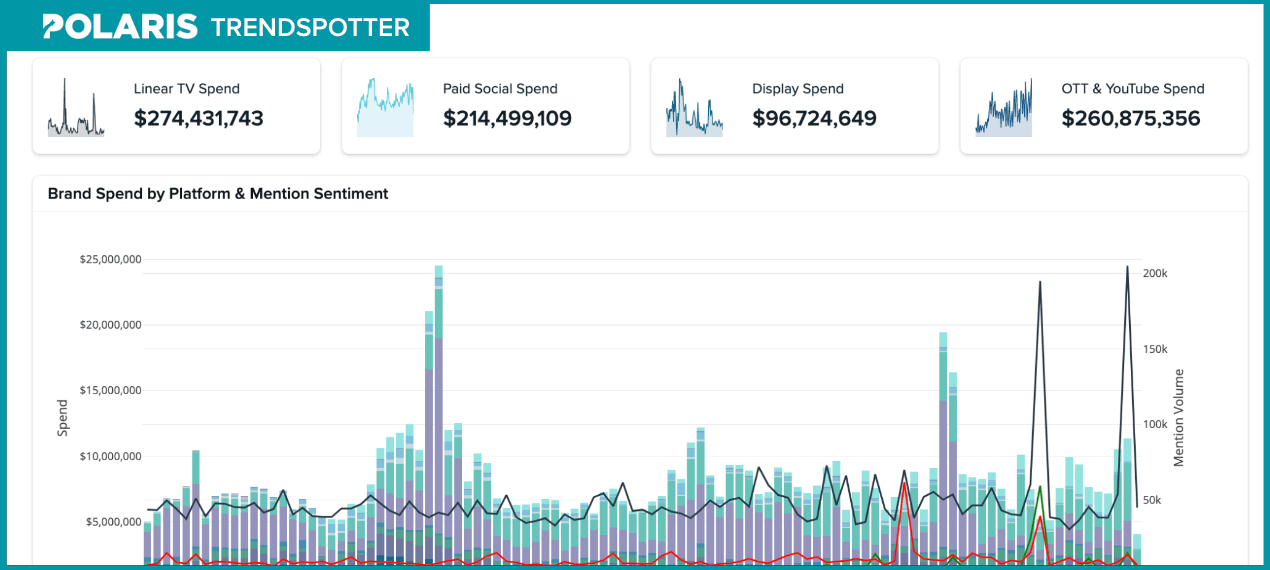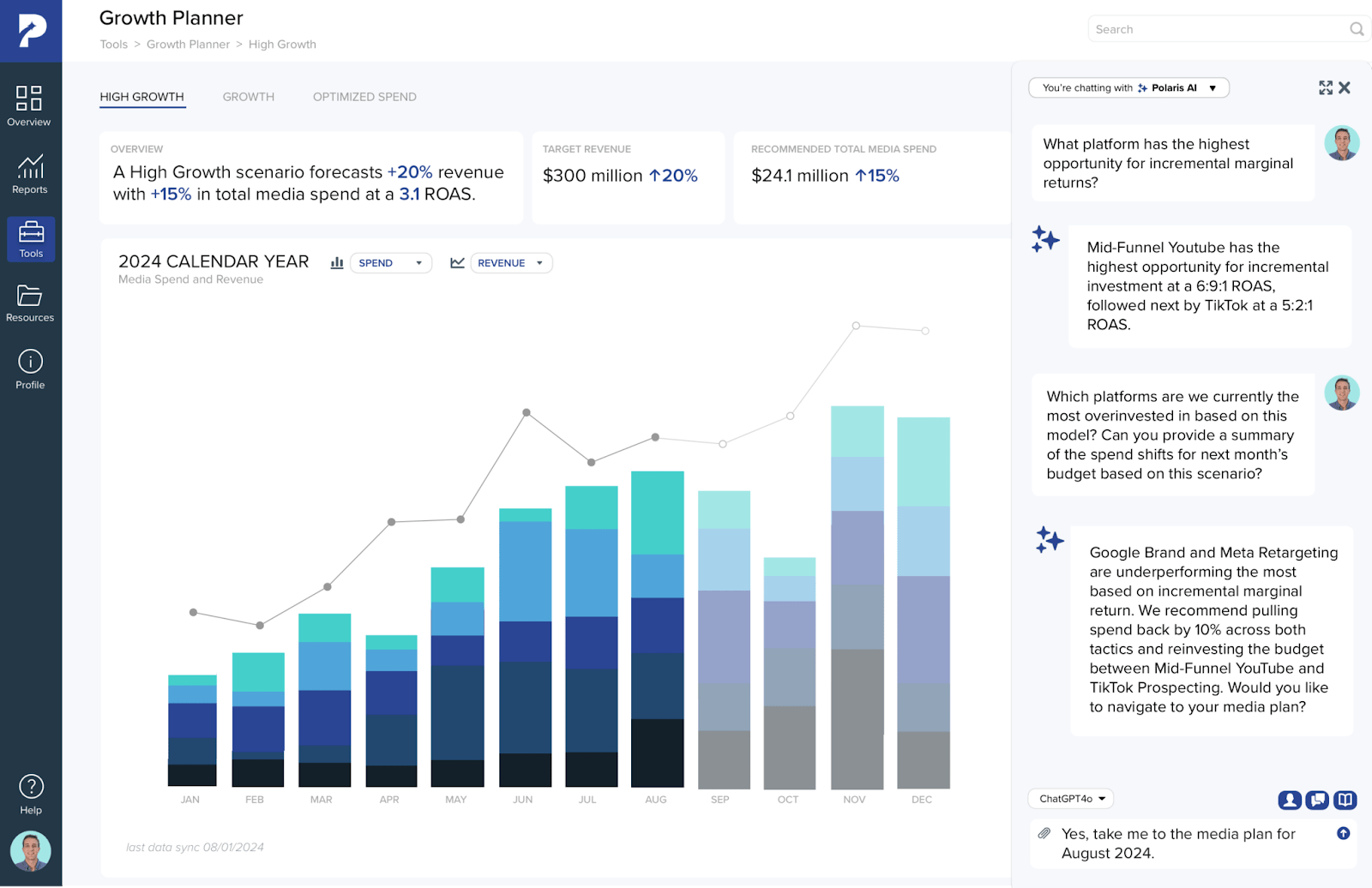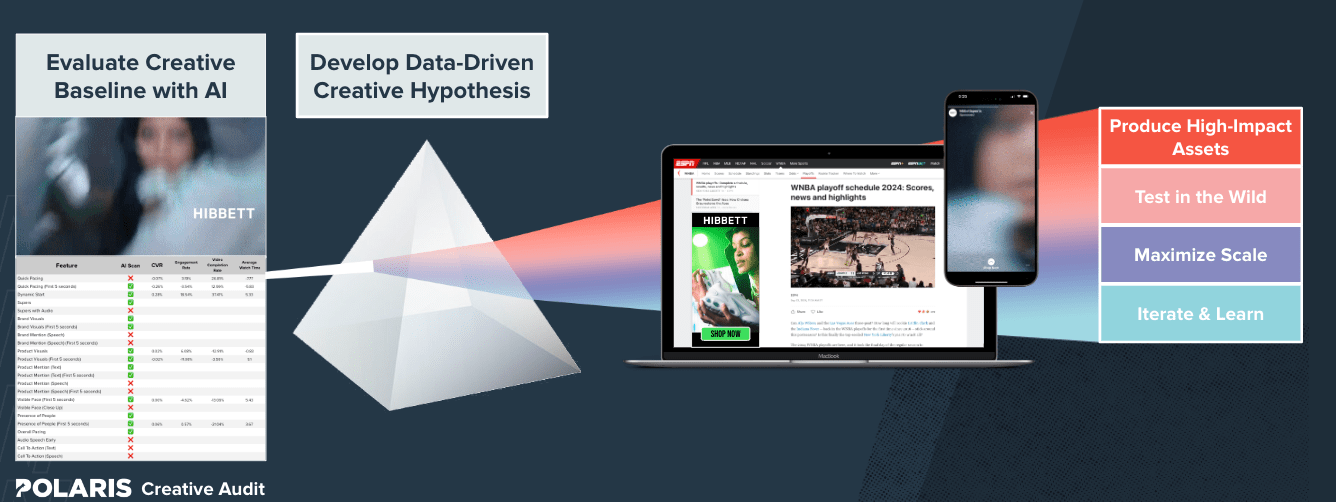In today’s fast-moving digital landscape, there’s constant pressure for brands to stay relevant and responsive. Traditional marketing approaches, which are often front-loaded with time-consuming planning, can make it hard for brands to react quickly to new opportunities.
Depending on their marketing strategy, different companies face different problems when it comes to campaigns. Brand-first businesses might spend too much time on pre-activation activities, falling into a sunk cost fallacy that leaves them clinging to their original strategy even when circumstances change post-launch.
A performance-first brand, on the other hand, might not spend enough time on its creative and identifying broader consumer, category, or cultural trends, which might lead them to bleed out on the lower funnel because they’re not devoting enough time to a feedback loop that takes into account full-funnel metrics.
Wpromote’s brandformance framework offers a solution: a mindset that balances the speed of performance with the depth of brand marketing to help businesses reduce time-to-market while still delivering strategic, high-quality campaigns. We’re challenging the notion that brand media can’t be held accountable and performance media can’t tell stories–with the right approach, you can have the best of both worlds.
By leveraging AI-powered resources to quickly identify consumer, culture, and category trends along with real-time data, plus post-launch optimization, our framework redefines agility. We’re breaking down how we use real-time data, continuous testing, audience insights, and more to build campaigns that are ready for today’s ever-evolving marketing landscape.
Shifting the focus to real-time adjustments
A core principle of the brandformance framework is the 20/80 rule: brands should only be dedicating 20% of their time pre-activation, while the remaining 80% should be focused where the greatest potential for improvement and optimization exists: post-activation. By implementing this method, brands can deploy their campaigns and adapt based on live data instead of sinking time into an extensive pre-launch phase before they even know what’s working.

This approach helps brands keep up with today’s constantly evolving media environment. That flexibility is essential for brands to stay ahead of shifts in consumer preferences while capitalizing on new opportunities as they arise.
Changing our focus to post-activation doesn’t mean we’re doing less in the pre-activation phase—we’ve just made the process faster by leveraging the latest data tools (we owe it all to our propriety Polaris tech!).
One powerful tool in the brandformance arsenal is predictive modeling. By simulating different scenarios, brands can assess the potential impact of various strategies on revenue targets and performance metrics. For example, a brand might use predictive modeling to test the effects of increasing its budget for a specific audience segment. These models can provide accuracy levels of up to 95%, letting brands make investment decisions with greater confidence.
Predictive modeling also helps answer some of the toughest questions marketing teams face, like how to allocate resources for optimal return on investment or what specific strategies will have the most impact on brand growth. This forward-thinking approach enables brands to plan with foresight, aligning marketing efforts with broader business goals.
Tools like our Polaris Trendspotter help teams get a qualitative look by gauging social sentiment, tracking cultural trends, and assessing brand perception. To make informed choices about audience engagement and media allocation, brands need access to real-time insights that reveal how their campaigns are performing.

Scenario planning further enhances this approach by enabling teams to test and refine their strategies based on real-time data. By inputting different media mixes and budget allocations into our Polaris Growth Planner (a media mix model that forecasts optimal spend and incrementality testing to validate total business growth) brands can experiment with their campaigns before making major investments.
This kind of proactive testing allows for immediate course correction, helping teams maximize their resources and refine their approach based on what’s actually resonating with audiences.

Solve complex brand challenges through open communication
Our proprietary process, the Brand Priority Framework, steps away from linear frameworks. Instead of asking cookie-cutter questions like “What does it take to create awareness?”, we focus on key brand imperatives as part of a think tank.
The think tank approach within the brandformance framework brings together a diverse group of media strategists, creative directors, and data analysts to tackle complex brand challenges. Rather than following a rigid campaign structure, a cross-function think tank makes space for collaborative brainstorming, ensuring that the final campaign strategy is innovative, engaging, and strategically sound.
These collaborative sessions also address key priorities such as brand essence, impact, and measurability, ensuring that the campaign aligns with both creative goals and performance metrics.

Source: HuddleIQ
Once big ideas are developed, they’re rapidly translated into actionable media and creative tactics so teams can move from planning to execution quickly. By maintaining flexibility throughout this process, brands can bring their ideas to life without getting bogged down with lengthy pre-launch phases.
Agility is at the heart of the brandformance approach; one of the most effective ways it achieves this is through continuous feedback loops. Once a campaign is live, real-time performance data is gathered, analyzed, and fed back into the strategy so teams can make adjustments on the fly. This feedback loop lets brands pinpoint what is working and what isn’t, making it possible to refine targeting, creative assets, or budget allocation as needed.
For example, brands can track how specific audience subgroups are responding to different aspects of their campaigns using heatmaps and engagement metrics. This granular level of insight empowers marketers to reallocate resources to the tactics that are driving the most engagement, maximizing the effectiveness of the campaign without relying on outdated metrics.

Source: Neurons
In addition to performance metrics, the brandformance framework integrates creative auditing tools to make sure campaign assets are resonating with audiences. Creative audits evaluate each piece of content based on industry best practices and brand guidelines, providing teams with actionable insights into how their messaging is being received across different platforms.

This combination of data and creativity enables brands to launch campaigns that are not only impactful but also aligned with audience expectations. By continually testing and refining creative assets, teams can produce content that’s fresh, relevant, and tailored to the specific needs of their audience.
The result is a campaign that hits the mark, engaging consumers on a deeper level and fostering loyalty and brand affinity.
Continuous improvement through testing sprints
So we have a great campaign with resonant creative that reaches the right audiences across platforms–but we’re not done yet. Part of what makes the brandformance approach so effective is its commitment to continuous improvement.
Testing sprints are a key component of a successful strategy. That’s why we set aside roughly 10% of the media budget to experiment with new ideas. These sprints allow brands to test specific elements of their campaigns–such as audience engagement, messaging effectiveness, or channel performance–in a controlled environment.
Testing across multiple variables enables brands to gather data on what works best and use that information to guide future campaigns. By setting aside a portion of the budget for these experiments, brands can stay innovative and responsive to shifts in consumer behavior and media trends instead of getting stuck on what’s worked in the past.
A significant advantage of the brandformance framework is its ability to identify incremental growth cohorts. These are subgroups within the brand’s larger audience that show particularly high levels of engagement. Rather than taking a broad, one-size-fits-all approach, brands can pinpoint these high-performing groups and direct more resources toward them, optimizing campaign reach and efficiency.
For example, if a lifestyle brand initially targets a broad audience of outdoor enthusiasts, data may reveal that surfers within this segment are engaging at a higher rate. The brand can then allocate resources to create tailored messaging and activations, like sponsoring surf events or collaborating with influencers in the surfing community. Testing this targeted approach can drive significantly more engagement and yield a better return on investment than a broad-based campaign.
Adapting to a rapidly changing market
By shifting focus to post-activation efforts, supporting creativity with robust data insights, and using agile feedback loops to refine campaigns, the brandformance approach empowers brands to adapt quickly and effectively. The emphasis on real-time optimization allows brands to engage meaningfully with audiences and ensures campaigns stay relevant as market dynamics shift.
For brands looking to navigate today’s complex marketing landscape, this framework provides a balanced, future-proof strategy. By combining creativity, efficiency, and data-driven decision-making, brands can execute campaigns that not only perform well but also foster deeper connections with consumers, setting the stage for sustainable, long-term growth.








Responses